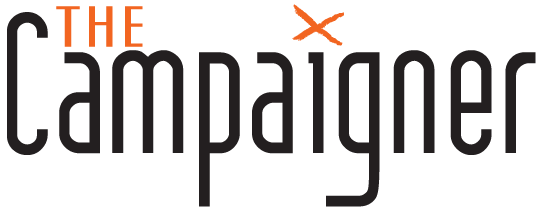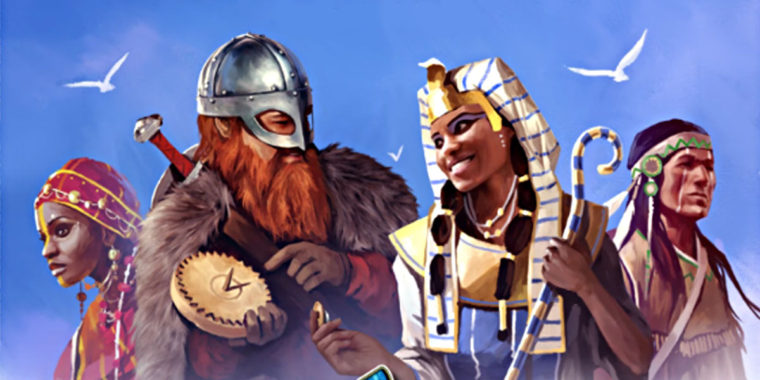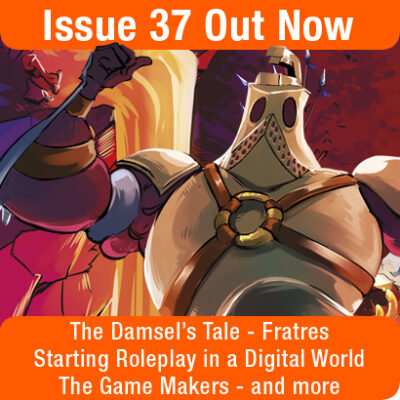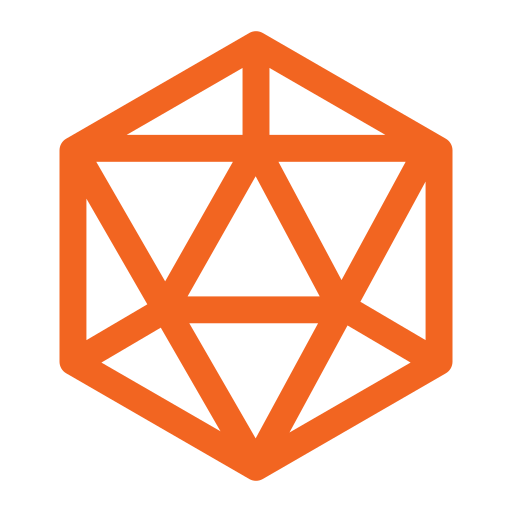Build up a city over three epochs to be the most honourable and cultural entity in the world in Hadara, a tableau city building game from designer Benjamin Schwer.
Much like Schwer’s previous design, Crown of Emara, Hadara revisits the idea of creating and fostering a multicultural community that attracts a cornucopia of denizens from all over the world. However, the game play varies greatly even if the theme remains largely intact. This time collecting resources and trading them for cultural investment is now replaced by card drafting and tableau building, though resource management remains as part of the players central actions. These cards and resource tracks on individual player boards represent each player’s city. Managing this area is the key to success, ensuring that the cards one drafts play well into the city they are abstractly constructing. Each player board will have an insignia which will help determine where they can navigate on the shared central board.
Schwer is keen to keep the game’s real action centralised to Hadara’s pentagonal board, where players will jockey for cards needed to build their cities. The board has five modular pieces, each housing a different set of colour-coded cards relating to the four resources and areas of concentration players can choose from to improve their cities: finance (yellow), military (red), culture (blue), and agriculture (green). There are also purple cards that act as wildcards, which can grant special abilities and will often offer a bonus to the other four tracks.
These four tracks begin differently for everyone, as each player will draft a starter card that will grant them a combination of totals to mark on their individual tracks as well as their starting gold. These cards will also determine player order. Though the main actions of the centralised board will be where player interaction occurs, each player’s individual board is where Hadara’s strategy is unravelled. Not only are players trying to build the best city they can from what’s available within the cards they draft, but there are point bonuses that can be gained by buying medals and creating sculptures that maximise point potential from players’ highest tracks.
Each of Hadara’s three epochs are broken down into Phase A and Phase B. The first epoch begins with the first player deciding which stack of cards they would like to choose from first. They will then position the central roundel, featuring the insignia on each player board, accordingly. The first player will choose the top two cards of the coloured pack, choosing one and playing the other face up on the designated spot on the player board. After choosing a card, the player can either pay its cost in gold to place it in their tableau or discard it to gain gold. Players will then adjust any of their four tracks accordingly. Play continues clockwise with each player drawing from the pile underneath their insignia. After everyone has taken a turn, the first player will move the roundel to the next clockwise space and the round will continue.
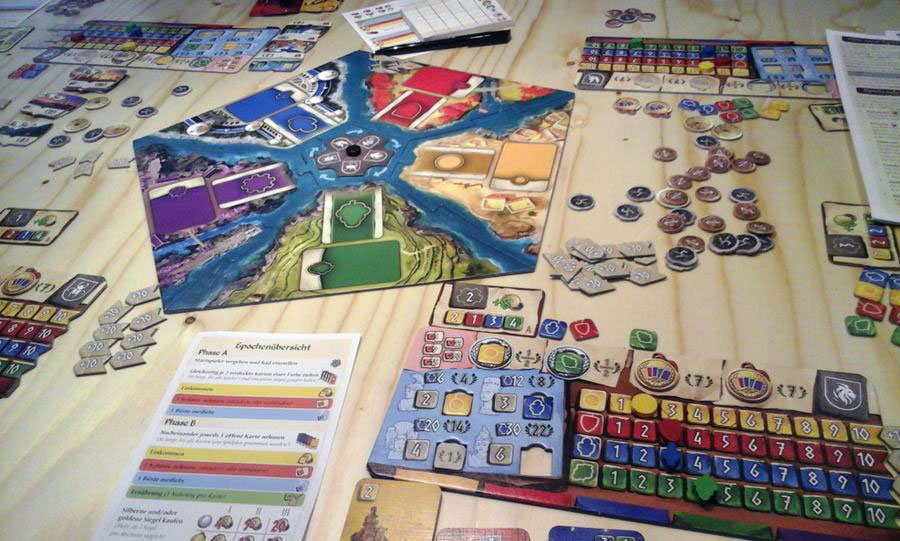
Once all the face down cards have been taken at the end of the round, players will then begin the income portion. Gold is gained based on where they are on the yellow track. Players will then be able to get a colony based on their positioning on the red military track. Colonies are bonus tiles that give players two options: pay the cost (in gold) to take in the colony, flip it over, and gain its benefits — usually gains to one’s tracks and victory points for endgame scoring – or ransack the colony and gain the value in gold and a lesser amount of victory points at the end of the game shown on the front of the tile. There are five stacks of colonies for players to choose from throughout the course of the game, each with an increasing military threshold to meet to have access to them. Players will then have the option of carving sculptures if they meet the requirements on the blue culture track. Sculptures allow advancement on any one track by inserting the associated coloured token into the open space, or players can choose to flip over one of these tokens to reveal victory points which will allow them to gain that main victory points at the end of the game. Players only have access to two tokens of each resource colour and managing them accordingly also poses strategic advantages. For filling in a sculpture area, victory points will also be granted toward endgame scoring. As with colonies, players will be required to meet a higher threshold on the culture track to sculpt on future turns.
After this occurs, Phase B occurs. The first player can choose any of the face up cards on the top of each pile to add to their tableau. This requires players to have been paying attention to what other players left face up as well, because a better card may be lurking below the pile unseen. Players will be challenged with what to take, when to take it, and whether the benefit is greatest for their own goals or if it is better to disrupt another player’s aspirations. Similar to the Phase A, players can decide to either pay the cost of the card and add it to their tableau or discard it for gold. There is a benefit to specialising in certain card colours, as the more cards one acquires of a given colour, the less they must pay. For example, if a player already has a red military card in their tableau and wishes to purchase a face up red card that costs three gold, it will only cost two. If a player has two blue culture cards and wants to buy a blue face up card that costs two gold, it will be free to take and play into their tableau.
Play continues clockwise around the table, this time with players able to take one face up card of their choosing without worrying about where their insignia points. Once all the face up cards have been taken or discarded, another income phase occurs with the same gold, military, and cultural thresholds being measured before two new actions occur: feeding cards and buying medals.
This is the portion where the green food track comes into play. At the end of Phase B in each epoch, players must be able to feed the cards they have in their tableau. The food track will not go down to meet this action, but it is important to ensure that if one player’s tableau has five cards, they are at five or more on their food track. If a player cannot feed all their cards, they must discard cards from their tableau until the remaining cards match the total on the food track. After feeding cards, players may now buy silver or gold medals.
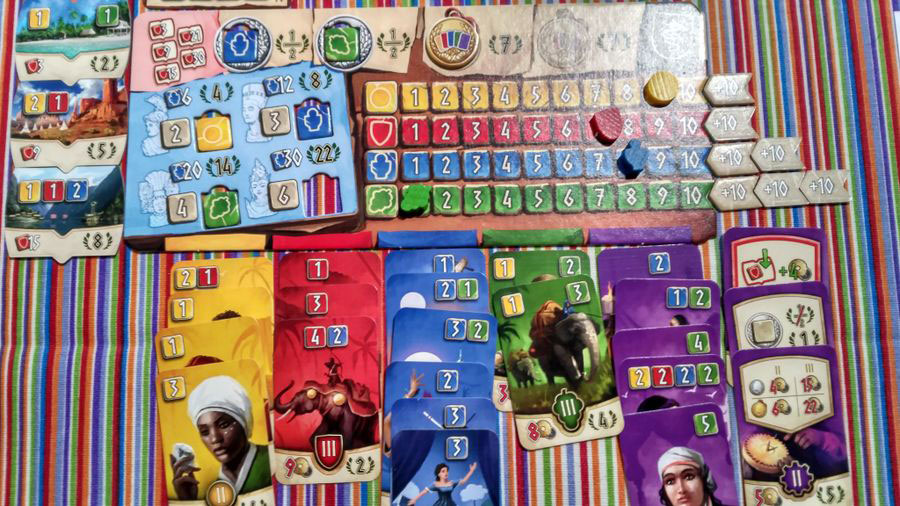
Silver medals work similarly to sculptures, where players can place one of their coloured tokens which will grant them one-half points for the number of resources they have accumulated on a respective resource track. For example, if a player ends the game with 22 food and has bought a silver medal and placed a green token in the slot, they will gain 11 victory points at the end of the game. This is important because placement on each track is not worth endgame points unless players have bought a silver medal and designated that track to score at the end of the game. There are two silver medal slots on each player board, so it’s possible to place two different coloured token or both of the same coloured tokens into these slots. Gold medals work differently. Again, there are two spots on each player’s board for these medals, which award seven points for having one card of each colour in complete sets. Therefore, if a player ends the game with two cards of every colour, they will earn 14 points. If they buy two gold medals, it will be 14 points per each complete set.
Once medals are purchased, the board is seeded with the next set of epoch cards, which increase both the cost and benefits associated with the cards, the first player is moved clockwise one space, and play continues as it did during the first epoch. After completion of Phase B at the end of the third epoch, points are tallied from the amount shown on cards, colonies, sculptures, medals, and other applicable point scoring areas with the highest point total being the winner.
Hadara is an easy game to pick up and play and though it is not a traditional civilisation game, it does a great job simulating some of these elements. The amount of strategy involved — what cards to purchase, which ones to discard, what is underneath the face up pile during Phase B, which tracks to maximise, what bonuses to focus on – offers plenty of paths to victory and constant replayability. The theme, while not engrossing, continues to focus on global inclusion and community building which seems to play to Schwer’s previous designs (not only Crown of Emara, but his work creating family-weight games for HABA) and is a welcomed standout in a world of board games currently enveloped by science fiction, Lovecraft, and superheroes. The cards are well balanced, the game does not hinge on overpowered moves nor does it get too bogged down in maximising one’s tableau into a sleek engine due to the many avenues by which players can earn points. It’s rare when a game this easy to learn provides so many opportunities to work one’s brain to puzzle out what will work best for them, and that won’t become obvious until midway through Phase B of the first epoch as other players begin to figure out their own boards. Each game offers the opportunity for everyone to start on equal footing without handicapping experienced gamers or asking too much of new players.
Hadara is designed by Benjamin Schwer and published by Hans im Glück and Z-Man Games.
